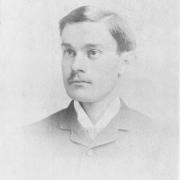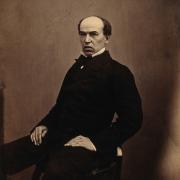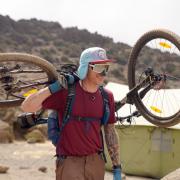Continuing our series 'down on the farm', we meet sheep farmer Denis Wimble to learn all about his typical working day
Name: Denis Wimble
Job title: Sheep farmer
Where: Burmarsh, on the edge of Romney Marsh
How did you start? Sheep were part of my life from a young age because I was brought up on a family-run farm.
Who, or what, was your inspiration?My father always wanted to own a traditional Romney flock utilising old pasture – I was able to fulfil his ambition.
How long have you been working with sheep?Since 1966, coming up to 44 years, but even before that I was helping my father. Sheep have always been a part of my life.
What sort of training did you have?At Hadlow College, where I completed a general agriculture course.
How is the flock made up? Romney sheep – it’s the traditional breed for the area*.
How have you diversified? My wife, Diana, runs our tearoom. It is called Lathe Barn and is a quite large enterprise sitting 104 indoors and about 50 outside. We attract a lot of coach parties from a wide area. Most of the food is cooked on the premises and Diana prefers to use local, seasonally available ingredients whenever possible. The tearoom is open all year but the days and times vary according to the season.
Have you diversified in other ways? We have a children’s farm which we open from the beginning of April to the end of September. We have rabbits, guinea pigs, goats, chinchillas and various other animals. The farm is particularly popular with younger children in the three to about eight-or-nine age group. We also have a nine-hole putting course which they find great fun.
Describe your working dayI get up, have breakfast and am out on the farm by 7am. When we’re lambing, it can be very much earlier and I can be working very long hours. I start the day by feeding the sheep and then I feed the animals at the children’s farm. Looking after animals takes up a lot of time and there are always a lot of jobs to be done.
How are the sheep looked after?We are very traditional. Because the grass largely consists of old pasture, the drainage is better than newer leys. We put the rams in on 5 November every year and we lamb indoors from the beginning of April. By then the weather is normally sufficiently warm for them to go out to grass after about 24 hours.
What are the sheep fed?The quantities very much depend on the weather conditions. We feed mixtures that include barley, oats, beans and sugar beet. This last winter was a long, tough and cold one and we fed far more concentrates than in recent years. Fortunately for us, although not so good for arable farmers, cereal prices have reduced a little in recent months.
Do you compete with the sheep? No - but both my older brothers are also in sheep. Gordon has a pedigree flock, is a member of the Romney Sheep Breeders’ Association and he is quite successful.
Marks out of 10 for job satisfaction?I think I would rate it at nine – and that is very nearly perfect, isn’t it?
Lathe BarnDonkey StreetBurmarsh, Romney Marsh TN29 0JN01303 873 618
Romney sheepThe official description of the typical Romney sheep is as follows: head wide, level between ears, with no horns and no dark hair on the poll. Eyes should be large, bright and prominent and the mouth sound. Face in ewes full, in rams broad and masculine in appearance. Nose and hooves should be black. Neck well set in at the shoulders, strong and not too long. Shoulders well put in and level with the back. Chest wide and deep. Back straight and long, with a wide and deep loin. Rump wide, long and well-turned. Tail set almost even with the chin. Thighs well let down and developed. The face should be white, and the skin of a clean pink colour. Ribs should be well sprung. Legs well set, with good bone and sound feet. Sheep should stand well on their pasterns. The fleece should be of white colour, even texture and a good decided staple from top of head to end of tail and free from kemp.


























